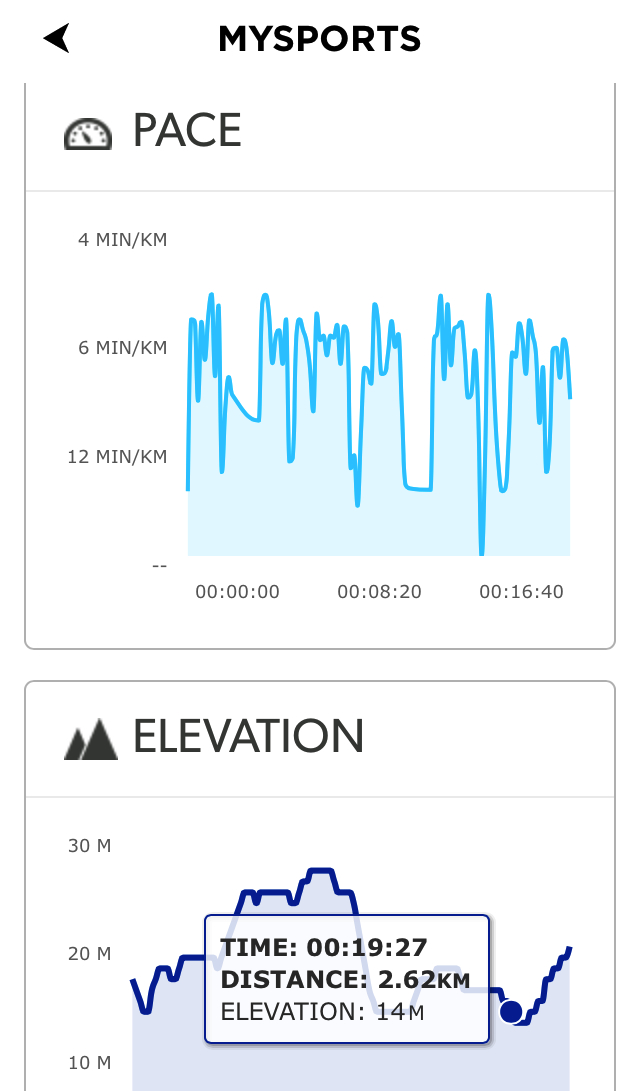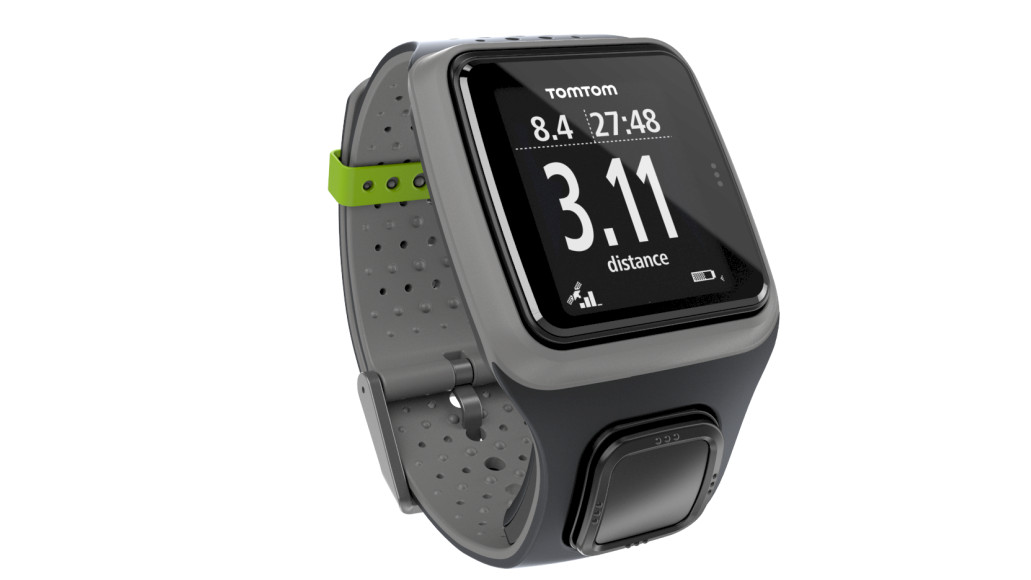TechRadar Verdict
This watch is getting a bit long in the tooth, but still does the basics fairly well and if you can find it for a bit cheaper, it might be worth a punt.
Pros
- +
Comfortable on the wrist
- +
QuickGPSFix is accurate
- +
Good battery life
Cons
- -
GPS syncing can be slow
- -
No built-in USB charging
- -
TomTom MySports still very basic
Why you can trust TechRadar
The TomTom Runner might not be the company's first journey into the wearable tech fitness domain - it previously joined forces with Nike for the Nike+ SportWatch back in 2011 - but it does mark its first solo watch outing. TomTom has clearly seen an opportunity in the wearable market and is seizing it by the wrists.
The TomTom Runner, launched at £149.99 ($169/around AU$185) but now much cheaper, is packed with all the functions for the running enthusiast.
However it's also available in a steroid-pumped launch price of £179.99 ($199/around AU$218) version, the TomTom Multi-Sport, which throws in extra features for swimmers and cyclists such as an altimeter and cadence sensor.
[Update: with the deals season now upon us, this running watch could be coming down in price pretty quickly - keep an eye on our Black Friday deals for all the top choices and find out if this - or the new TomTom Spark 3 - is available for a good deal.
Be careful though, as this watch has now been discontinued so make sure it's not second hand]
Other than that, the watches are identical, and their shared USP is obvious from the start. TomTom's own GPS mapping technology adds a new level of tracking and precision unavailable in popular wrist-based fitness devices such as the Nike FuelBand and Fitbit Flex, and puts it more in line with the likes of the Garmin Forerunner 10.
TomTom Runner: Design
The watch itself is made of two parts - the core watch module and the rubber strap. The module can be easily removed from the strap when off the wrist, which you'll need to do for connecting it up to the computer.
On the wrist, however, there's no need to worry about it coming loose as the two fit seamlessly together. This also means you can change the strap for a different colour if you're feeling so inclined. And don't worry about getting it wet - the watch is waterproof up to 50m.
The Runner has a sleeker feel to a lot of rivals on the market, and feels mostly unobtrusive on the wrist. However, while you'll likely keep your Fitbit Flex or Nike Fuelband on through the day, the TomTom Runner feels designed to be strapped on before you head out the door and taken off when you return.
The watch accesses the mapping signals via the GPS receiver that TomTom has placed below the screen to form the four-way button, instead of hiding it inside. However there's also an accelerometer on board for when you're using the treadmill function.
Before you head out with the Runner, you'll need to sync it up with the TomTom MySports Connect program and fill out your personal profile. Your age, weight, height and gender will all be collected here, but you can also enter these into the watch directly.
Once you're set up, we'd also recommend ensuring that all your mapping data is updated. Not doing so means you might find your watch starts giving some funny results before you're even out the door. The TomTom Runner is also able to pair with other secondary devices, such as a heart rate monitor, so you can make sure these are connected before you head out on your run.
TomTom Runner: Performance
And once you're synced up, you're ready to go. Push left and you can see the battery status, internal storage and other stats. Hitting the right button lets you select either Run or Treadmill, depending on what you're about to do. Hit right again on Run and the watch will acquire your location data via TomTom's QuickGPSFix technology.
The length of this process will vary by location but we found that it could sometimes take a minute or two (or even longer on the odd occasion) which could be a tad annoying, especially as the QuickGPSFix is supposed to be, well, quick.
Just make sure you're standing still while doing it - moving about will only take it longer to hone your position. But once you're locked, you're on your way.
The Graphical Training Partner, accessed by hitting the down button on the GPS calibration screen, will likely be the most-used feature of the watch, offering up four different modes: Zone, Race, Goal and Laps.
Zone will alert you if you're going too fast or too slow to ensure you're keeping at a steady pace or heart rate. Go too fast on either and the Runner will give you a friendly vibration to let you know. Too slow and you'll also be given a buzz to tell you to pick up the pace.
Race, meanwhile, will compare your current run to previous ones to show where you've increased or reduced speed, while Goal lets you set distances and will vibrate to let you know when you've reached certain targets (every km, for example).
Finally there's Laps mode, which lets you set either automatic or manual laps taking into account time and distance.
Hit right when you're in action and you'll be able to view all your real-time stats, including pace, lap time and stride length (and heart rate if you've attached the peripheral). While we found that the data on the go was sometimes lagging behind our actual performance, the end results agreed with those recorded by other devices.
As for the battery, TomTom claims you'll get 10 hours of power, and we found that this was pretty accurate. Though for the after-dark joggers among you, turning on the Runner's night mode means the constant light is more of a drain on the battery so you won't be hitting near that number.
TomTom Runner: Data analysis
When it comes to hooking your watch up to the computer, things do get a tad fiddly. The lack of the Nike+ SportWatch's integrated USB connector means you'll have to connect it via the very USB cable it's supplied with - you won't be able to use any old cable here, which is annoying.
Once you're plugged in though, the syncing is pretty straightforward. TomTom's offering up its own online MySports portal for collecting your data. This is pretty basic right now, though allows you to upload data to third party services such as RunKeeper.
MySports is based on the MapMyFitness system, meaning you can log in with an existing MapMyFitness account or export your data from MySports to the platform. Or, you can choose to export the data in a variety of file types if you can't directly upload to your preferred platform for whatever reason.
Using MySports you can see a map of your journey along with all the stats such as time, average pace and calories burned. While we'd like to see some better tools here for things like lap breakdowns, we expect it will get a lot of improvements when it comes out of beta.

TomTom's also released its MySports app for iOS (sorry Android users, you'll have to wait a bit longer) to allow for immediate data syncing via Bluetooth.
Once you're connected, the app can share your data with your MySports account or with third party accounts such as Runkeeper. The app also keeps a nice log of your workout history.
But one of the most handy features is the syncing of QuickGPSFix, making sure it's always up to date on your watch without the need to plug it into the computer.
Overall, it's a feature that the watch desperately needed, and we're glad that TomTom finally delivered.
Verdict
TomTom's watch is purely about the fitness focus; there are none of the extra whizzes and bangs you'll be finding in the array of smartwatches looming on the horizon.
But with its unobtrusive, lightweight design and respectable price tag, the Runner is strong on features that make it a quality companion for both the keen and amateur runner alike.
Hugh Langley is the ex-News Editor of TechRadar. He had written for many magazines and websites including Business Insider, The Telegraph, IGN, Gizmodo, Entrepreneur Magazine, WIRED (UK), TrustedReviews, Business Insider Australia, Business Insider India, Business Insider Singapore, Wareable, The Ambient and more.
Hugh is now a correspondent at Business Insider covering Google and Alphabet, and has the unfortunate distinction of accidentally linking the TechRadar homepage to a rival publication.

